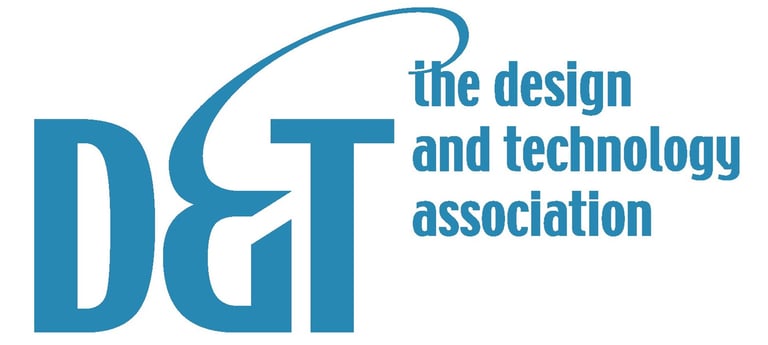
The Design & Technology Association Interview
"Employees should be competent to undertake the tasks expected of them. All employees and supporting adults should be trained in safe use of equipment, machinery and processes during initial training, or by in-service training." BS4163:2014 Health and Safety for Design and Technology in Educational and Similar Establishments – Code of Practice
Who are the Design & Technology Association?
The Design and Technology Association is a not-for-profit organisation dedicated to supporting and championing design and technology education. We are a membership organisation focused on giving teachers the tools, knowledge and information they need to become more effective, more experienced and more efficient. The D&T Association supports teachers in implementing the new D&T programmes of study by providing training, advice, information and guidance.


Handsam spoke to Jon Parker, Lead Consultant for Health and Safety at the Design and Technology Association to find out more about safety management in D&T, challenges, best practice and what the Association does for the world of education.
What do you do for schools?
In relation to safety advice and support, the D&T Association supports schools, academies, colleges, initial teacher training and other educational establishments to enable employers to meet their statutory obligations for health and safety training for their employees. This includes teachers, support staff and technicians working in D&T departments and site personnel working across the school.
The D&T Association H&S Training Standards for Design and Technology were established in 2000 and some 30,000 teaching and support staff have been accredited on these standards during this time. These H&S Training Standards provide the benchmark for health and safety training in D&T, providing staff with the training, competency and accreditation to meet the requirements of the British Standard Code of Practice for the subject.
The D&T Association currently has a network of some 120 Registered Design and Technology Health and Safety Consultants (RDTHSCs) who are trained to deliver a range of H&S Training Standards that cover both the management of H&S in D&T departments and the use of a wide range of medium and high risk equipment and machinery used across the subject. All of these consultants are required to work to a Code of Practice and to attend regular training and refresher training courses as part of the D&T Association’s Quality Assurance procedures.
What would you identify as the main safety issues in Design and Technology lessons today?
The main safety issues in D&T lessons today include the following:
The need to ensure that all staff teaching and supporting teaching in the subject are competent to do what is required of them. In the first instance, staff need to know how to safely manage H&S. They need to be familiar with the requirements of current H&S legislation, know how to prepare risk and COSHH assessments, know how to create a safe working environment for colleagues and learners, know what statutory testing is required of equipment and machinery, such as Local Exhaust Ventilation and Portable Appliance Testing and know what maintenance equipment and machinery requires. Staff teaching D&T then need to know how to use the equipment safely on a personal level, and also then need to be able to confidently demonstrate those skills to learners, whilst maintaining suitable levels of supervision at all times.
Have the safety issues of the subject changed over the past decade? If so how?
Over the past decade the D&T Association has ensured that the H&S Training Standards have been extended so as to reflect the range of equipment and machinery that has been introduced into everyday practice in D&T lessons over this period. There is also now a far greater expectation that staff will work across a wider range of specialisms than was previously the case and this means that they have to become familiar with a much wider range of equipment and machinery than in the past. In terms of personnel, technicians now play a far more significant role in supporting teaching and learning with learners in workshops and studios, working alongside teachers, and this has led to the development of H&S Training Standards aimed specifically at supporting technicians to undertake their role most effectively.
How are the D&T Association responding to new risks in the subject?
One of the most significant risks in the subject today is the lack of subject specific training by teachers to the depth required and therefore lack of the subject knowledge, skills and understanding of the range of tools, equipment and machinery that are in use in the subject today. Students in initial training typically train to teach in just one year via PGCE or school based initial teacher training programmes. Their contact time in workshops and studios to develop initially their own skills and then the skills to impart these skills to others is generally very limited.
The D&T Association recognises this issue as it becomes very apparent when delivering H&S training to new teachers who in many cases will not have had first hand experience of using specific tools, equipment and machinery before attending a H&S training course. RDTHSCs have to be very aware of this and minimum course times are set by the Association to ensure that trainers have the necessary time to gradually develop trainees’ competence of the processes being covered. In addition, the Association recognises that many students in initial training require basic skills training and are currently working towards providing additional skills training opportunities to these colleagues to develop their confidence and competence with tools, equipment and machinery.
Can you give us an example of D&T safety where things have gone wrong?
As an example, HSE have just reported details of an accident in a D&T lesson in Islington on a belt sanding machine, in which a student was left with serious hand injuries. The accident clearly highlighted a number of apparent serious weaknesses in the department, including:
The lack of adequate training by the teacher;
The lack of regular maintenance, and presumably recording of maintenance carried out on the machine;
The lack of appropriate training for the student and therefore any records of training by the student; and
The lack of adequate supervision of a student using the machine for the first time.
For us at the Association it highlights and reinforces the importance of trying to ensure that all D&T colleagues in schools and colleges have the opportunity to attend training on the D&T Association H&S Training Standards and are able to therefore demonstrate that they know how to manage H&S in D&T. Sadly in the case of this school, this was not the case.
What are three pieces of best practice advice you would give for safer D&T lessons?
Firstly, to ensure that all staff have the opportunity to audit their H&S training needs and are given the opportunity to attend both initial and refresher training each year so as to keep their accreditation up to date. One of the designated training days each year should be given over to this important task.
Secondly, to provide teachers with the opportunity to make more use of technician support in their practical lessons. As budgets are cut, teachers’ expertise is stretched and in some situations, class sizes increased, the availability of technician support is more important than it has ever been to ensure that workshops and studios are managed safely. It is very important that schools refer to the maximum recommended teaching group numbers in BS4163:2014, Section 5.1, 'Recommended area ranges for design and technology teaching spaces'.
Thirdly, as the pressure of other subjects squeezes the curriculum time available for D&T, to endeavour to ensure that learners have sufficient time to study the subject and to develop their knowledge, skills and understanding of how to work with a range of materials. Making well and safely takes time and it is when work is rushed that accidents may well happen.
What does the future hold for the D&T Association and D&T Safety?
There are challenges and opportunities facing the subject. Many schools are experiencing funding pressures and the impact of the EBacc has been to narrow the curriculum offer in some areas. At the same time, there are other design and technology qualifications (technical qualifications) being developed which may well have an increased take-up. The Association is keen to understand and respond to the needs of all teachers involved in teaching this critical subject and ensure they are doing so safely. The importance however of ensuring that staff not only receive initial training, so that they are competent and qualified to use the equipment and machinery that the curriculum requires, but also have the opportunity to attend statutory refresher training, cannot be emphasised too much



Office 27, East Moons Moat Business Centre
Oxleasow Rd, Redditch B98 0RE
Phone: 0333 207 0737


